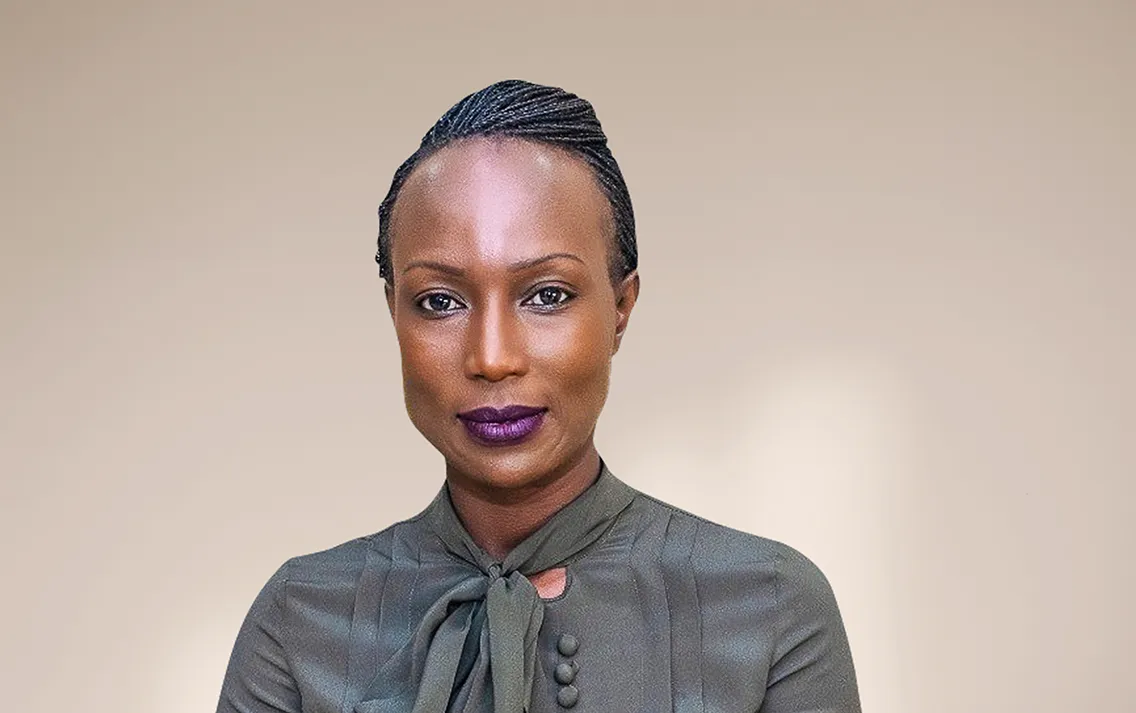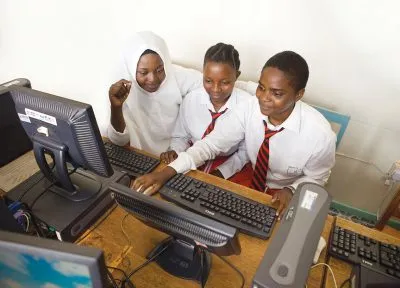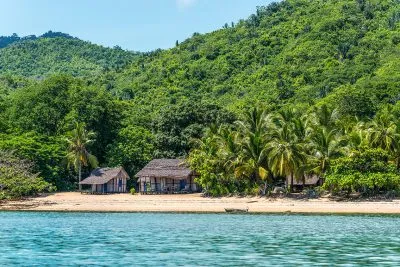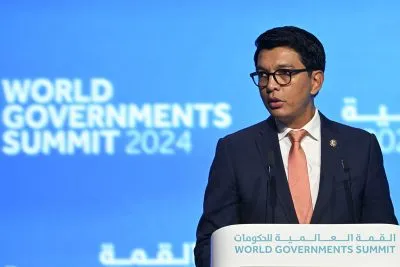The Africa Finance Corporation’s report on the state of Africa’s overall infrastructure development points out the vital importance of this sector to the continent’s economic transformation but decries what it terms insufficient support by both the public and private sectors.
Investments in this area are critical for building a network of physical infrastructure assets, encompassing both economic infrastructure (such as ports, railways, roads, and airports) and social infrastructure (like schools and hospitals). Despite the demonstrated link between a country’s capital stock and improvements in productivity and living standards, the report shows how Africa’s total capital stock has seen minimal growth over the past three decades.
The report details how the annual growth rate of Africa’s capital stock averaged only 1-2% in the 1990s and has been 2-4% since the start of the millennium, in stark contrast to China’s consistent 10% growth in the area during the same periods.
Although the real value of Africa’s accumulated capital stock has gradually increased, it remains significantly low at just $10.5bn, compared to nearly $64bn in China by 2019. While China’s total capital stock was 0.47 times less than Africa’s in 1960, it surpassed Africa’s by 1996-1997 and experienced a rapid increase in line with the country’s economic surge from the early 2000s. By 2018, China’s capital stock was 6.1 times greater than Africa’s.
The African Development Bank (AfDB) estimates the continent’s infrastructure gap as being up to $107.5bn a year, while the World Bank estimates that countries need to invest 7.1% of their GDP in relevant infrastructure to meet the sustainable development goals (SDGs). These figures, however, date to pre-Covid times and now probably understate the size of the issue.
Dr Rita Babihuga-Nsanze, Chief Economist at the AFC, explaining how the report was compiled, commented that while collection of the data was quite daunting, “I think we have a few advantages. Number one is that we sit on a lot of data just by virtue of what our teams are able to collect and what they know about the overall context for the countries and the sectors. It also meant picking up the phone and calling the utilities, the ports and others and they were happy to share their data.”
While there is a massive overall deficit in the continent’s infrastructure needs, there is also quite a lot to feel satisfied about. For example, $13bn was poured into Africa’s seaports between 2010 and 2022, the result of which is the development of new regional hubs like Tanger Med in Morocco and a significant expansion in cargo handling capacity across the continent, with total container throughput in Africa rising from 24.5m TEUs in 2011 to 35.8m TEUs by 2021.
Babihuga-Nsanze says this may reflect investors responding to African demand for imported goods. “Only one or two ports, including the one in Gabon, an AFC project, are export-focused. So the ports are really just following an economic story – the rise of the African consumer and the increase in demand for products.
“The other thing about the ports is that they allow an investor to be as light touch as they possibly can with respect to Africa, which traditionally suffers from these negative perceptions around investment.”
However, the increased investment into Africa’s ports could mask what is a more troubling picture for the rest of the continent’s logistics infrastructure. According to the report, Africa’s total paved road network spans just 680,000km, which is six times smaller than the extent of India’s, despite the similar population size.
The railways, which stretch across 87,000km, suffer from underinvestment, low usage, and technological disparities, particularly in sub-Saharan Africa, where 13 countries lack an operational rail network. The aviation sector, though showing growth potential, is hindered by high costs and safety concerns.
The lack of coordination across these segments, combined with inefficient logistics corridors, creates bottlenecks that make transporting goods across the continent slow, costly, and inefficient.
“It creates a logistical problem to have all of this investment in ports – though not just in terms of the logistics, as I would argue there are climate-related health and safety issues as well, especially when you have a lot of lagging at ports with goods that are being essentially trucked inland into the hinterland,” Babihuga-Nsanze argues.
The investment in the ports, she says, must be matched by investments in other elements of the logistics chain in order to derive the full benefits.
The energy deficit
Energy is another element that is in short supply. The continent is still heavily dependent on traditional, polluting sources like coal and wood fuel, and contributes less than 6% to global energy consumption.
Although Africa added over 66GW of power generation capacity between 2012 and 2022, this increase is insufficient to meet its energy needs. The continent’s total power generation capacity is still on a par with that of Germany, a single country with a much smaller population.
Furthermore, Africa has barely tapped into its vast renewable energy resources, utilising only a small fraction of its solar, wind, geothermal, and hydropower potential. The majority of energy investments are concentrated in more developed countries like Morocco, Egypt, and South Africa, leaving lower-income African nations struggling with an acute energy deficit.
While the continent’s energy deficit focus is usually on the number of people without access – 600m, according to most estimates – Babihuga-Nsanze also points out the insufficient energy to power the continent’s industries.
The solution to the problem of lack of energy for domestic use, she says, could be to install solar panels on people’s houses but while “you would have solved the problem of domestic electrification, you wouldn’t have touched the problem of industrial energy, which is really at the heart of Africa’s energy deficit. There’s much less of a focus on that problem,” she observes.
The report attempts to foreground this aspect. “We want to encourage this modern energy minimum concept, which is thinking about the amount of power that an economy needs, and not just households. We have to shift our thinking to supplying our economies with the power that they need to do the manufacturing and value addition, while also increasing the electrification rate.”
Babihuga-Nsanze says the energy sector is one with a lot of ‘low-hanging fruit’ but which requires strong regulatory frameworks. Drawing on the AFC’s experience of funding energy projects around the continent, she recommends that “you have to have very strong PPP frameworks and you need to be able to set the costs, set the electricity tariffs at a rate that makes these projects viable”.
With grid constraints, inadequate public funding and limited private sector interest in transmission and distribution, the continent is likely to contend with inefficiencies and capacity issues for some time yet. Development finance institutions can address these challenges by investing in transmission, distribution, and brownfield generation projects.
Costs hamper digital expansion
The news is better on the African digital infrastructure front, where there have been significant investments, especially in first-mile infrastructure like subsea cables, which have bolstered international internet bandwidth.
However, these investments have highlighted vulnerabilities, particularly in the diversity of routes and resilience of the networks. For example, the Equiano and 2Africa cables, which are set to enhance Africa’s connectivity, underscore the need for matching investments in middle-mile infrastructure, such as terrestrial fibre networks, and last-mile connections that are crucial for reaching underserved populations.
By 2023, Africa’s total international bandwidth had reached 36.7Tbps, yet this is a fraction of the continent’s potential level, indicating a significant gap in the distribution and local use of this capacity.
Africa’s middle-mile infrastructure, which includes the expansion of terrestrial fibre and the creation of integrated digital corridors, remains underdeveloped compared to the needs of its growing population.
While over 409m people now live within 10km of a fibre network, most are concentrated in urban areas, leaving rural regions with limited access. This disparity contributes to a growing ‘usage gap’, where a rising number of Africans are covered by broadband networks but are not utilising them. As of 2022, 680m Africans were within reach of broadband but not using it, mostly due to affordability issues and the lack of infrastructure that reaches their communities.
Babihuga-Nsanze also expresses concern that usage could be tapering off at the wrong moment for the continent. “We’re plateauing at a level that is still quite a lot lower than the rest of the world in terms of internet penetration. We are at 40% and the nearest comparison is Asia Pacific at 64%. We think there is a major affordability issue and a need to bring down the costs.”
Broadband costs are prohibitively high, particularly for those in the lower income brackets, and while mobile broadband has seen more rapid adoption due to its relatively lower cost, even this remains out of reach for many. The price of fixed broadband, around $25 per month, consumes nearly 15% of the average income, far exceeding the global average of 2.9% as a share of income, illustrating the ongoing struggle to make digital services accessible to all.
The report refers to the AU’s goal of ensuring universal internet access by 2030, aiming to provide all Africans with basic internet connectivity at affordable rates. Achieving these goals will require substantial investment, estimated at $100bn, with a significant portion dedicated to expanding infrastructure.
The continent also faces challenges in scaling up data centres and ensuring local data sovereignty, with Africa currently accounting for just 1% of the world’s data capacity. As the demand for digital services continues to grow, driven by rapid population growth and urbanisation, the need for a robust, affordable, and accessible digital infrastructure across Africa has never been more critical.
Industrialisation bottlenecks
Infrastructure deficits, particularly in logistics and energy, are identified in the report as major barriers to Africa’s industrialisation ambitions.
Despite the AU’s Agenda 2063, which aims for economic transformation through industrialisation, Africa’s manufacturing policies have yielded mixed results. Manufacturing’s share of the continent’s GDP has remained at around 13% since the 1990s. Many African economies continue to rely heavily on unproductive agriculture, keeping the continent’s share of global manufacturing output below 2%. Notably, 70% of Africa’s manufacturing activities are concentrated in just five countries: Egypt, Nigeria, South Africa, Algeria, and Morocco. Industrial efforts beyond these nations are generally low-technology and low-productivity, contributing to stagnation and, in some cases, deindustrialisation.
Deindustrialisation, Babihuga-Nsanze argues, is a demonstration of how inadequate investment into energy and infrastructure can undermine the sector.
In contrast, countries that have ramped up investment are reaping returns in their industrial sectors. “We show that there may be a handful of countries – including Gabon, Togo, and Lesotho – where we saw a clear story of an increase in manufacturing value addition and the share of population that is employed in the manufacturing sector.”
To realise its industrial potential, the report recommends that Africa must address its physical infrastructure and funding challenges. The continent needs reliable and affordable energy, modern infrastructure, and access to capital to support the growth of technology-
intensive industries.
Additionally, Africa should focus on commodities-led industrialisation, maximising the value of its abundant resources through domestic processing and beneficiation. By doing so, African countries can reduce their reliance on raw commodity exports and finished product imports, thereby driving sustainable industrial growth.
Beneficiating critical minerals presents a significant opportunity for Africa to capitalise on the growing demand for clean technologies while advancing industrialisation through medium-high and high-tech manufacturing. However, as seen with bauxite and copper, local processing does not always yield uniform benefits, necessitating a deeper understanding of value chains to craft the most effective industrialisation strategies for each African nation.
Moving away from the extractive model that has long defined African commodities will require tailored approaches. To successfully industrialise, Africa must first address its infrastructure challenges, particularly by ensuring reliable and affordable energy for industries and improving cross-border logistics. It would also help, Babihuga-Nsanze points out, to have more and bigger DFIs focused on the infrastructure agenda. “We need more AFCs ultimately because we can’t do it all ourselves. We don’t have the balance sheet to do that. We need 20 AFCs!”
Want to continue reading? Subscribe today.
You've read all your free articles for this month! Subscribe now to enjoy full access to our content.
Digital Monthly
£8.00 / month
Receive full unlimited access to our articles, opinions, podcasts and more.
Digital Yearly
£70.00 / year
Our best value offer - save £26 and gain access to all of our digital content for an entire year!

 Sign in with Google
Sign in with Google 



